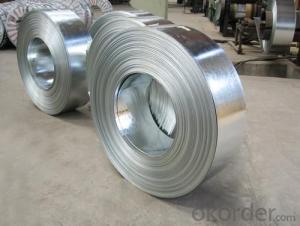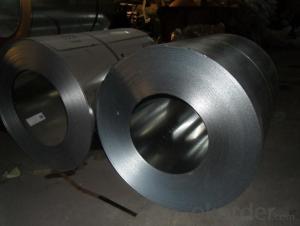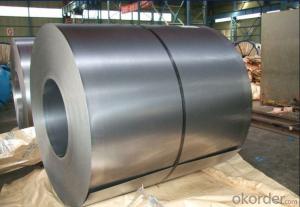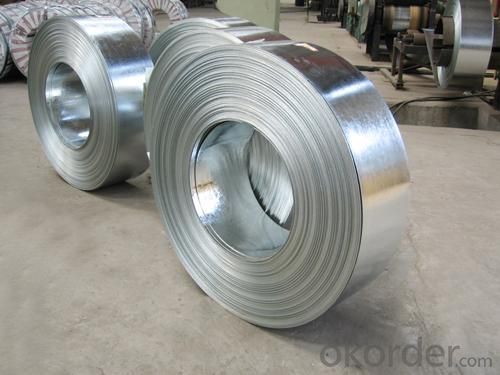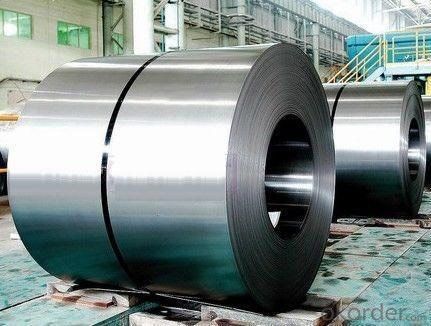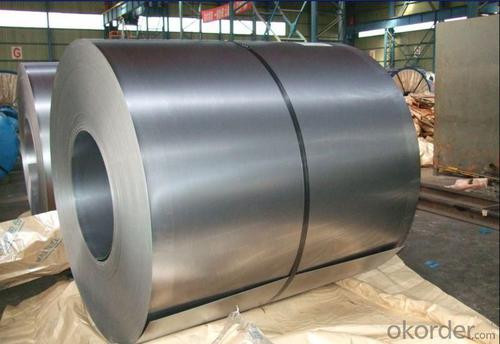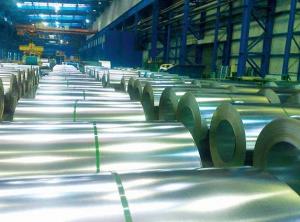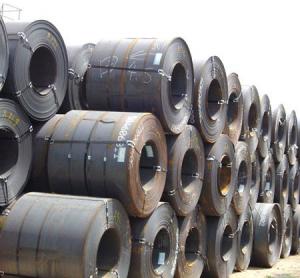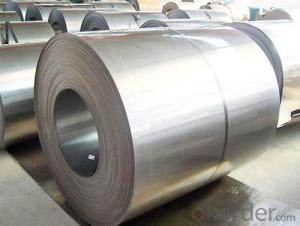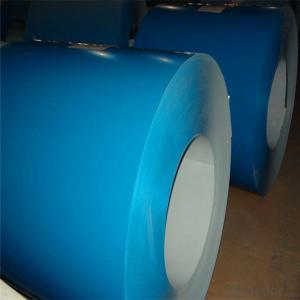ASTM A526 Hot Dipped Galvanized Steel Coil
- Loading Port:
- China main port
- Payment Terms:
- TT OR LC
- Min Order Qty:
- 5 m.t.
- Supply Capability:
- 100000 m.t./month
OKorder Service Pledge
OKorder Financial Service
You Might Also Like
Specification
ASTM A526 Hot Dipped Galvanized Steel Coil
Specifications
1, Thickness: 0.15-2.00mm
2, Width: 900-1250mm
3, Coil Weight: 3-10 ton
Process of galvanized steel coils
Pay off reel → double cut shear → welder-notcher → entry accumulator → pre cleaning section → furnace → hot bridle → zinc pot → air knife → after cooler → water quench → dryer → skin pass mill → dryer → tension leveler → dryer → chemical coater → chemical oven → cooler → exit accumulator → oiler → exit shear → tension reel.
Standard | AISI, ASTM, BS, DIN, GB, JIS, etc |
Grade | SGCC, DX51D, DX53D, DX54D, etc |
Thickness | 0.15-3.0mm |
Width | less than 1500mm |
Inner Diameter | 508/610mm |
Zinc Coating | 60g/m2-180g/m2 |
Coil Weight | 3-8 Tons |
Spangle State | regular spangle, small spangle, big spangle, non-spangle |
Surface Treatment | Chromate, Oil, Lacquer Seal, Phosphating, etc |
STEEL GRADE | CHEMICAL COMPOSITION % | MECHANIC PROPERTY | C.B OF COATING | COATING | |||||||||
C | Si | Mn | S | P | T.S | Y.S | E.L | ||||||
x103 | x103 | x102 | x103 | x103 | Mpa | Mpa | % | d=0 180° | G/M² | ||||
JIS G3302 SGCC | 12 | 30 | 41 | 31 | 21 | 480 | 300 | 13 | OK | Z60-150 | |||
JIS G3302 SGCH | 12 | 10 | 21 | 18 | 8 | 680 | 650 | OK | Z60-150 | ||||
ASTM A653 CS.B | 20 | 30 | 60 | 35 | 30 | 386 | 205~380 | 20 | OK | Z80-275 | |||
DX51D+Z | 29 | 21 | 18 | 1.8 | 11 | 355 | 245 | 38 | OK | Z80-275 | |||
G550 | 20 | 6 | 73 | 5 | 17 | 715 | 654 | 8 | OK | Z80-275 | |||
- Q: I am looking to weld some stainless steel using stainless electrodes. I was told that the arc welder needs to be able to run in DC in order to be able to weld stainless steel. Is this true? Or can you weld stainless steel with stainless electrodes with AC also?
- Arc or stick welding is not ideal for stainless steel. It is advisable to use MIG or TIG welding instead, with argon shield gas. I would only advise manual arc welding as a last resort, or for field repairs. Expect corrosion issues, and issues with excessive oxidation and porosity in your stainless welds. Manual arc welding is a dirty process and simply does not protect the weld puddle well enough from oxidation and carbon pickup, which are especially damaging in sensitive stainless alloys. As to whether to use AC or DC for stick welding, you should consult the instructions found on the box of electrodes. If polarity and current recommendations cannot be found, then you should contact the manufacturer and get it in writing. You should probably not make welding decisions based on advice from a sales representative. Firstly is is not documented. Secondly, sales representatives are not legally liable for damages caused by weld failures, YOU are.
- Q: What are the different types of steel coil surface treatments for corrosion resistance?
- There are several types of steel coil surface treatments for corrosion resistance, including galvanizing, zinc coating, chromating, and polymer coating.
- Q: What are the different surface treatments applied to steel coils?
- Some of the different surface treatments applied to steel coils include galvanizing, which involves coating the steel with a layer of zinc to protect it from corrosion, painting or powder coating to enhance the aesthetics and provide additional protection, and passivation to remove any impurities on the surface and improve its corrosion resistance.
- Q: how come when i put steel legs in lowest price in grand exchange no one buys them i got 101 steel legs in there and there at lowest price and they have been there for 3 days
- Becuase you should sell something else.
- Q: Ok, I have motorcycle classes and im afraid that I wont feel the gear shifter when shifting. So I want to make the boot softer from the toes where the steel is at so i can feel the gear shift with my toes. When i walk and bump into something by accident with my boots I dont feel anything I almost dont notice it. So I think i will be a problem since I wont be able to feel anything.
- sorry you cant
- Q: How do steel coils resist corrosion?
- Steel coils resist corrosion due to the protective layer formed on their surface. This layer, known as a patina, acts as a barrier between the steel and the surrounding environment, preventing moisture and oxygen from reaching the metal and causing oxidation. Additionally, steel coils can be coated with corrosion-resistant materials such as zinc or paint to further enhance their resistance to corrosion.
- Q: How are steel coils used in the production of signage?
- Steel coils are used in the production of signage as they provide a durable and versatile material for creating sturdy sign structures. The steel coils are typically cut into desired shapes and sizes, then bent, welded, or formed to create the framework of the signs. This allows for the creation of different types of signs, such as billboards, street signs, or large display signs. The steel coils' strength and resistance to weather make them ideal for outdoor signage that needs to withstand various environmental conditions.
- Q: How can steel coils be recycled?
- Steel coils can be recycled by first cleaning and removing any contaminants from the surface. Then, they are shredded into smaller pieces and melted down in a furnace. The molten steel is then formed into new coils or other steel products. This process helps conserve natural resources, reduces energy consumption, and minimizes waste.
- Q: What are the different steel coil packaging methods?
- Some of the different steel coil packaging methods include wrapping the coil with plastic or paper, using steel strapping or banding to secure the coil, placing it in a wooden crate or box, or using steel or plastic sleeves to protect the edges of the coil.
Send your message to us
ASTM A526 Hot Dipped Galvanized Steel Coil
- Loading Port:
- China main port
- Payment Terms:
- TT OR LC
- Min Order Qty:
- 5 m.t.
- Supply Capability:
- 100000 m.t./month
OKorder Service Pledge
OKorder Financial Service
Similar products
Hot products
Hot Searches
Related keywords
